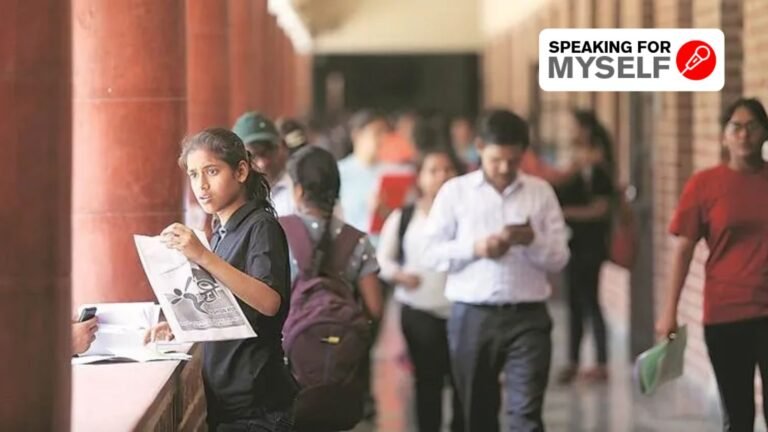Final year students at my university are holed up in the library, flipping through page after page, scavenging for surgical incisions for radical mastectomies and drugs for impending heart attacks. At the same time, they are worried that they might fail the exam. Meanwhile, university auditoriums are busy welcoming surgeons from all over the world pouring in to discuss laparoscopic surgery. In the fierce competition for medical school, people focus on what’s in front of them. They live in the present. They take the adage “life must go on” a little too seriously, so much so that the recent suicides of two young medical students have not registered in their consciousness. Or maybe I did, but it was quickly replaced by an excessive sense of competition and a stifling sense of individuality.
The lackluster behavior and pervasive silence regarding mental health and suicide is highlighted by the fact that a similar suicide of a third-year student, which occurred a week after the first incident, remains unreported. One reason could be that it happened at home and the student succumbed to his injuries in the ICU. University authorities have been lukewarm in intervening and proposing remedial measures for the remaining students who are under similar stress and forced to come to terms with their own mortality. Equally problematic is the tight-lipped attitude of parents.
It is also shocking that colleagues, even close friends, are unaware of the stressors that have pushed them over the edge. Most reports reiterate what has already been said – the girl is a feisty child, she comes from home that day, feeds her home-cooked meals, and gives no hint of an impending mental health crisis. I didn’t say anything. However, skeptics trace the cause to the postponement of final exams two months later when rumors made students careless about their studies. I don’t have a clear reason for the second one, but students casually said this to me.
Many believe that under-reporting and under-reaction to suicide among physicians is due to a stigma against poor mental health among physicians. In our idealistic culture, we confuse them with divine messengers with a robot-like structure (no head or heart) and a healing touch. But far more progressive Western countries are suffering as well. As several researchers have discovered, this silence does not allow the full picture of the problem to emerge, resulting in the cycle repeating itself. It’s no surprise, then, that the first-ever study on physician suicide in India is as recent as 2021, when M Kishor and colleagues skimmed national newspapers to collect data.
At the same time, while mental health concerns are real and need to be addressed, suicidal ideation among medical students ranges from 1.8% to 53.6%, which is much higher than the general population, and this is also true for women. Is biased. The real trouble begins when a child decides to go into medicine. This occurs when most doctors come from middle-class backgrounds and there are many doctors in the family, or when the desire to climb the social ladder is imminent. The latter are often families in business or other well-paying jobs who have enough income to afford basic amenities and small luxuries, but not enough respect (the illusion of) in society. will never be obtained.

And a deadly combination of two factors – money and respect – drives children into medicine. At best, saving someone’s life is a cliché that can come across as self-righteous. But at the age when all this is happening, in their late teens or early twenties, young people are too absorbed in themselves to look outside of themselves. It would be unfair, if not cruel, to ask them to think about humanity when their egos are disintegrating.
They are not prepared to pay the huge fees required by the profession. The illusion quickly crumbles. But after a few years, there is little chance of opting out. One can either make peace with it or continue to cry, the latter building up frustration and anger. Needless to say, there has been a steady increase in the number of people refusing housing due to stress, reprimands, and lack of sleep making them nervous. A similar trend is seen when students prefer non-clinical and para-clinical fields or explore other options after MBBS. In this technologically advanced, social media driven world, it’s how difficult it is to make money or gain respect as a by-product of it. ?
The culture of medicine has become even more resistant to this problem. While the mentality of trying too hard and neglecting self-care remains an important factor, the far more pressing issue is the one-sided, worldly concept of success honed in medical school, borrowed from the aspirational middle class. It is. The focus is on getting good grades and securing good grades. When a high-achieving, perfectionist student enters medical school, he is forced to accept mediocrity in a class full of talented students and is brought back to reality.
The revised NMC curriculum is a welcome step in this regard. A month-long yoga and meditation class has been proposed to help students acclimate when entering medical school. Electives give students early exposure to specific subjects, and AETCOM (Attitude, Ethics, Communication) classes are suggested to support soft skills. In reality, these classes are often skipped or considered extra study time. We go back to the same thing. No amount of regulation will help unless the traditional attitudes of people in medical schools change.
The author is a doctor and author of ‘Yeh Dil Hai Ki Chordarwaja’.


